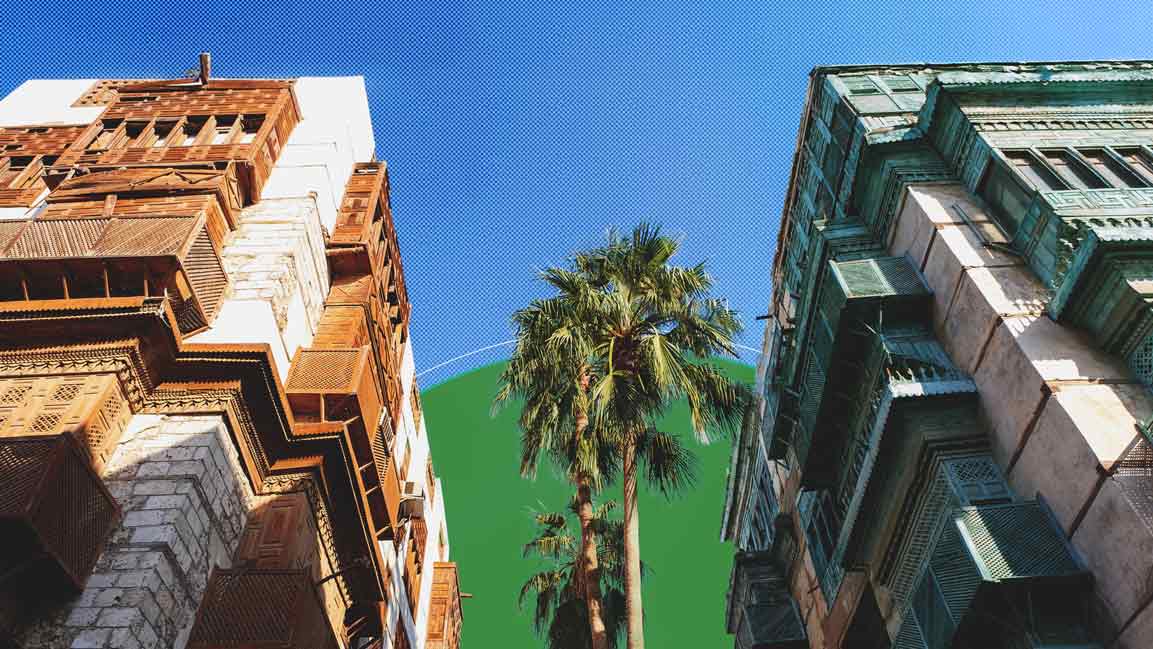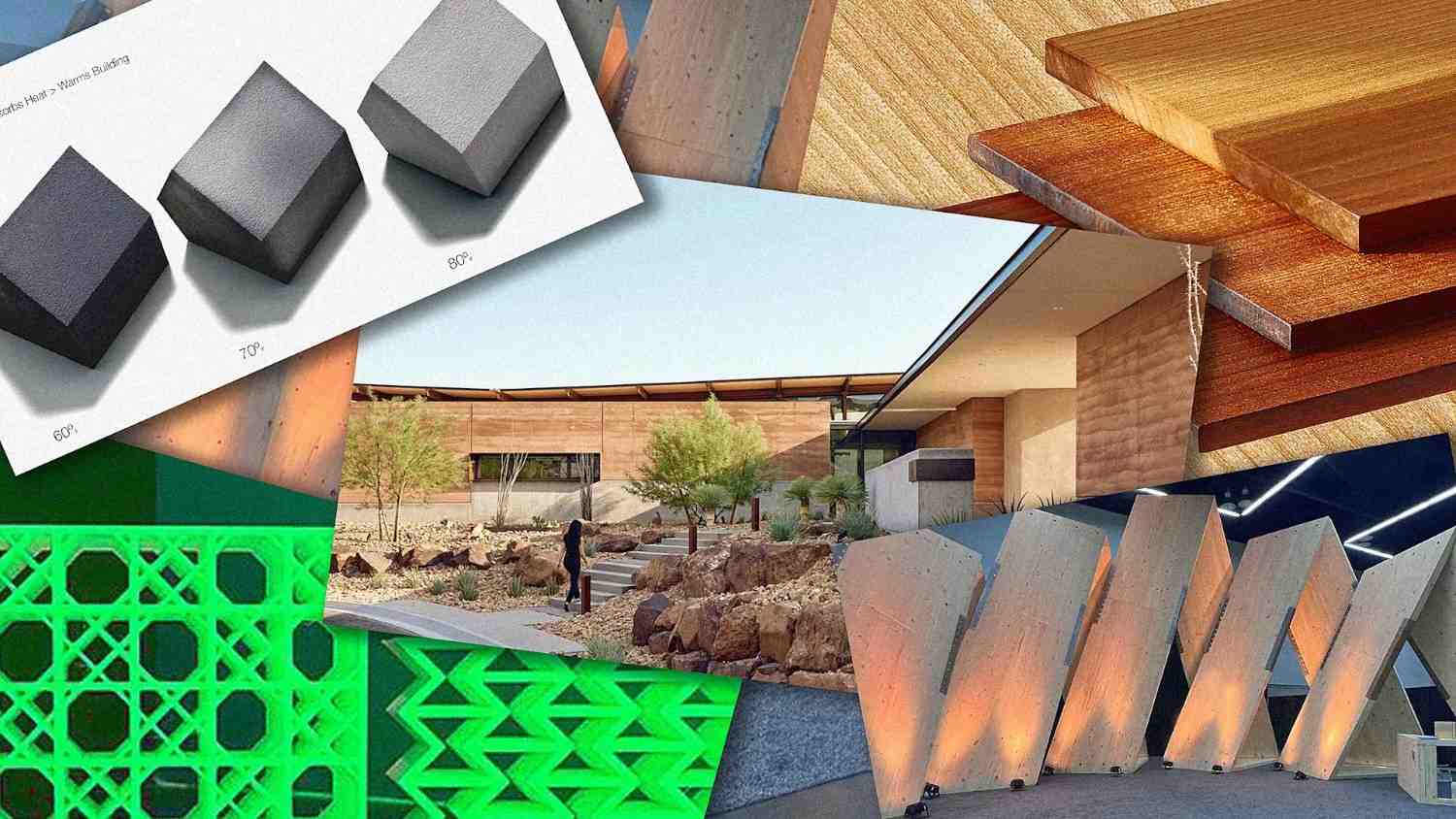- | 9:00 am
This 7th-century Saudi town mastered sustainable design before smart cities
Long before the concept of smart cities entered the lexicon, a 7th-century district in Jeddah was already demonstrating how to live smarter.

Gulf cities are investing billions in smart buildings, green certifications, and climate-resilient designs to create futuristic skylines. However, some of the most innovative sustainability ideas in the region existed long before air conditioning, steel, or glass.
They can be found in Jeddah’s Al Balad, a 7th-century district that UNESCO recognized as a World Heritage site. Long before sustainability was a global concern, the merchants and families of Al Balad built homes that stayed cool in the desert heat, used local materials, and balanced privacy with beauty.
The Ministry of Culture is now restoring its coral-stone tower houses, balconies, and latticework rawasheen. This is part of Saudi Arabia’s Vision 2030, which places heritage preservation alongside mega-developments like NEOM and The Red Sea Project.
Al Balad’s design principles offer valuable lessons that could guide the Gulf’s next generation of urban design.
CLIMATE-CONSCIOUS DESIGN
Jeddah’s history as a port city shaped the architecture of Al Balad.
From the sea, travelers and traders once saw a version of “skyscrapers” – four-story houses that were remarkable for their time, explains Ali Almenaie, who grew up hearing stories about the district from his grandmother.
“Everything was built using natural materials,” says Almenaie, who now runs the tourism company, Discover Al Balad. Many of the houses, some 300 years old, were constructed with coral stone from the Red Sea, which he explains is “a breathable stone that helped to maintain a comfortable temperature throughout the seasons, especially keeping out the heat and humidity during the summer months.”
The wooden rawasheen screens from façades became a hallmark of Hejazi architecture and a practical design element. These traditional latticework window shutters, often built on upper floors, regulate the entry of light and air.
“They provide ventilation and protect the house from heat,” says Khouloud Abdulwassi, a tour guide with Discover Al Balad. Beyond cooling and shading the rooms, rawasheen also allowed residents – particularly women – to observe the street without being seen. Their craftsmanship reflects the artistry of Hejazi builders, and today they remain one of the most recognizable features of Al Balad’s heritage homes.
Even urban planning was intentional.
“Most of our streets and corridors were oriented northwest to southeast to capture the prevailing wind,” says architect and heritage specialist Talal Samarkandi. Ventilation came naturally through large windows and qamariya (stained glass windows); tall ceilings allowed hot air to rise and escape through upper vents.
He further explains that coral-stone walls and wood added insulation, while their thickness slowed heat transfer, keeping interiors cool year-round. These design systems worked harmoniously with the environment.
FROM NEGLECT TO REVIVAL
By the 1960s, Al Balad had slipped into disrepair. Families moved out, commerce shifted elsewhere, and collapsing houses made parts of the district unsafe. “The area had deteriorated and needed a lot of renovations,” Almenaie says.
UNESCO designation in 2014 marked a turning point. Today, two initiatives are shaping its future. The Ministry of Culture oversees the Jeddah Historic District Program, with a focus on heritage conservation.
“Even as recent as ten years ago, it was very hard for people to access Al Balad,” Almenaie says. The area was densely populated, and without proper care, buildings were deteriorating. “But today, the ministry is working to restore the houses, while maintaining their authenticity.”
“And it has also become much more accessible,” he adds.
Restoration is governed by strict UNESCO standards, requiring that 80% of each building remain original. “We are using the same bricks,” Samarkandi explains. “The government has identified areas to source coral reefs, and we are using the same type of wood for the windows, restoring them in the original style with the same carvings.”
LESSONS FOR TODAY’S ARCHITECTURE
Al Balad’s traditional cooling systems offer a different approach than the Gulf’s modern glass towers. In many contemporary buildings across the region, air conditioning accounts for a significant portion of electricity use, and reflective glass and aluminum façades can affect the temperature of the streets below.
Samarkandi recommends integrating traditional lessons into contemporary practice. “We need to rethink how we build,” he says. “Orienting structures to capture prevailing winds and designing openings so that windows can be opened when there is a breeze to let in natural airflow.”
Traditionally, most buildings were painted white to reflect sunlight rather than absorb heat. Sunbreakers were also used to deflect street heat, helping to keep the surrounding environment cooler.
Abdulwassi notes that planning at the neighborhood scale is just as important. A distinctive feature of the historic district is the prevalence of baraha, or open courtyards, that break up the cluster of houses. This approach also fostered a sense of community, with shared courtyards and streets designed for social interaction.
The Jeddah Historic District, which is under the Ministry of Culture, led the restoration of the boutique hotels.
In the boutique hotels, glass has been added to the roshan, giving it a modern touch while still allowing natural sunlight into the houses.
Another example of drawing on traditional design is the Saudi Architecture Project, a government initiative that promotes design codes based on regional identities. The project features architectural styles from small cities along the Red Sea coast and Hejazi and Najdi architecture.
The goal is part nostalgia, part innovation: modernizing elements such as rawasheen, baraha courtyards, and coral-inspired materials for contemporary construction. At the same time, it honors the authenticity of local traditions and celebrates the region’s cultural heritage.
WHY IT MATTERS
Al Balad demonstrates that climate-resilient design is not new to the region. Its homes, using local materials and smart design to create comfort, were sustainable by necessity, not regulation.
Reviving these principles offers both a competitive edge and long-term cost savings for today’s developers and architects shaping the Gulf’s future cities.
“If you look at Jeddah’s old buildings, you will see that sustainability was built in. They used local materials, conserved energy, and designed for the climate. Every element had a purpose,” Samarkandi says.
Balancing growth with sustainability, modernity with heritage, and technology with human-scale design is a challenging task. But the district proves it is possible.
As Saudi Arabia pushes forward with giga-projects under Vision 2030, the lessons of Al Balad could offer more than cultural pride. They could shape how regional cities build for a hotter, more resource-constrained future.
Delve deeper into human-centered and purpose-driven design, and how design thinking influences technology, sustainability, and consumer experience, inspiring actionable ideas for a better future at the Innovation By Design Summit, partnered with Msheireb Properties, in Doha, Qatar, on September 24. Attendance at the Innovation by Design Summit is by invitation only. Delegates can register here to receive their exclusive invite.







































